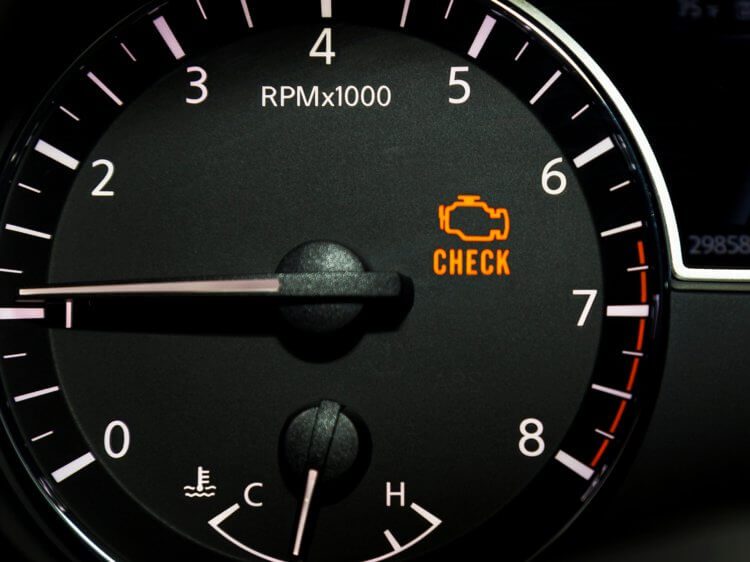
At one point or another, every vehicle owner has ignored an illuminated warning light on the dash and even had the light go off by itself. But, not all warning lights should be ignored; and knowing the meaning behind a slip indicator light, for example, can help prevent a catastrophe.

The slip light is linked to a system of sensors that help maintain the stability of your vehicle in certain driving conditions. Your vehicle’s traction control and Anti-lock Braking System (ABS) are core components of this set-up.
It is perfectly normal to have your slip indicator light blink occasionally, and this usually means that your vehicle’s stability control system is working to prevent your car from sliding. There is however cause for alarm when your slip indicator light stays on throughout a journey.
This usually means that one or more components of your vehicle’s stability control system have failed, affecting its ability to effectively monitor and respond to loss of traction.
In this article, we look at some common reason why your slip warning light is on and how to fix it. But before we get into that, let’s understand how your vehicle’s stability control system works.
How it works
Each of the wheels on your vehicle uses an electronic speed sensor to communicate individual rotational speed and overall stability as it pertains to skidding or wheel slippage with your car’s Engine Control Unit (ECU). The ECU uses this information to engage the traction control and ABS when wheel slippage is detected.
The traction control system responds by slowing down your vehicle and applying brake pressure to the affected wheel(s) while the ABS helps you maintain steering control by preventing the wheels from locking when brake pressure is applied. It is during this time when your slip indicator light begins to blink.
But, it stops once your vehicle has stabilized. There is cause for alarm; however, when your slip warning light stays on for a few days since this means that your traction control and ABS have been disabled. Now, depending on the manufacturer of your car, your slip indicator light can either be displayed as a car skidding or in text form.
Reasons why your Slip Warning Light is on and how to fix itFaulty wheel speed sensors
The wheel speed sensors (WSS) are located behind the brake rotor on the wheel hub or CV joint, depending on your vehicle’s model. Their location means they easily get worn out or damaged by road debris.
Once your vehicle’s ECU detects the presence of a faulty wheel speed sensor, it goes ahead and disables the traction and stability control system causing the slip light to turn on. Sometimes, your wheel speed sensors aren’t failing and are simply dirty due to the amount of dust they are exposed to.
You can, therefore, begin troubleshooting the issue by cleaning each WSS using brake cleaning products or a wet rag. To do this, you will need to securely lift your car with jack stands, take the wheel off, locate the sensor and disconnect it before wiping it down and reinstalling it.
Make sure to have your steering wheel turned away from the side of the vehicle you are working on. If the slip light doesn’t go off, you will need to manually check your WSS to make sure they are the cause for the warning light.
Since WSS generate alternating current (AC), you can test whether they are in working order by using a voltmeter. Again, you will need to lift your vehicle, locate and disconnect the sensors securely.
Attach the voltmeter leads using alligator clips to the WSS circuit, and finally spin the wheel or hub while watching the voltmeter for readings. If your wheel speed sensor is in good working condition, your voltmeter should read anywhere between 50 to 700MV. A lesser voltage or a 0 reading means your WSS has failed, and you need to have them replaced.
Damaged tone ring
Tone rings, which are also known as a stator or reluctor rings, work in conjunction with your vehicle’s wheel speed sensors to generate alternating current. For passive wheel speed sensors, the notch and tooth tone ring is either mounted to the wheel hub or driveshaft and at a specific distance from the sensor.
The magnetic field between the notch and teeth increases and decreases with the rotation of the tone ring. The sensor relies on the magnetic field created by the notch and tone ring teeth to generate a sine wave voltage signal. If the tone ring gets damaged and loses a tooth, this upsets the gap between the sensor tip and the tone ring teeth.
A more considerable gap between the sensors magnet and tone ring compromises the sensor’s ability to generate a usable voltage. Since your wheel speed sensors use output voltage to communicate with the ECU, your vehicle’s control unit will no longer be able to ‘see’ what the wheel is doing.
It will therefore interpret this as a stability control system failure and turn on the slip warning light. There is no fixing a damaged tone ring and you will have to have it replaced.
Faulty connectors
Some vehicles have ABS control modules that test the functionality of the wheel speed sensors by sending a DC bias voltage through the ground wire before the cars even begin to move.
The bias voltage travels through the various connecting circuits to the sensor. If there is a problem with one of the connectors, the voltage coming back from the sensor will not be in line with the manufacturer’s specifications.
The system will view this as erroneous and proceed to turn on the slip warning light. To fix this, you will first have to correctly diagnose that it is, in fact, the connectors (circuits) that are faulty and not the sensors by measuring the voltage supplied by the ABS module.
Begin by disconnecting the sensors wiring, using a digital multimeter connect the positive lead to the connector leading to the control module and the negative point to the connector that leads to the ground for the ABS control unit.
If the voltage reading doesn’t fall between 1.5 and 5V, then there is a problem with the circuit connectors, and they need to be replaced.
Malfunctioning ABS Module
Both your vehicle traction control and anti-lock brake system send signals to the ABS control module. Sometimes an issue with the ABS such as low brake fluid can be misinterpreted by the control module as an issue with the traction control system.
Your slip light will be turned on as a result. There are two solutions to a malfunctioning ABS module, one reprogram it, and two replace it. Sometimes there could be an electrical connection issue between the sensor and the ABS controller, which the control module may see as a traction control system failure.
Traction control light is turned on
Some vehicles have two separate warning lights for the traction control and ABS systems. Having a different warning light for the traction control system gives drivers the option to either turn it off and on. So, if the warning light is on, the solution can be as simple as turning the traction control light off.
In Conclusion
Based on how complicated your vehicle’s stability control system is, it is highly advisable to have your diagnostic inspections and fixes done by a qualified mechanic. Additionally, the close working relationship between the traction control system and ABS makes it challenging to pinpoint the exact fault in the system even with an OBD II scanning tool.



